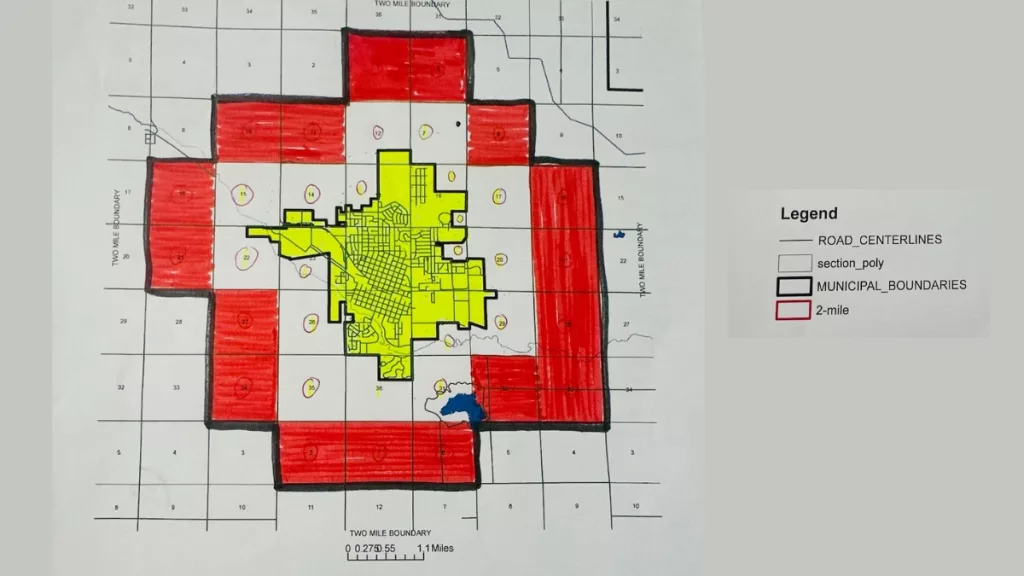Pictured: A proposed map of a one-mile zoning limit plan. The red area is currently in the two-mile zoning area and would be removed if that is the route the city/county goes.
The Carroll County Board of Supervisors has reached a tentative agreement on what they would like to see changed in the joint City of Carroll/Carroll County two-mile zoning control agreement. The 28E agreement, which dates back to at least 1984, currently gives the city council zoning control in a two-mile radius outside of city limits. Carroll County Zoning Administrator Sarah Haberl told the supervisors during this (Monday) morning’s meeting that the differences between the city’s and county’s zoning regulations are minimal.
Your browser doesn’t support HTML5 audio
She adds that the city’s code is more lenient on rural agricultural enterprises in the two-mile zone, as the city allows businesses to have up to 15 employees. At the same time, the county permits only up to nine for the same type of entity. One substantial difference is the building permit costs. A building permit for a $250,000 home would cost only $50 from the county, while the city’s permit would be $817. Board Chair Stephanie Hausman says history shows that Carroll may not have grown much in population in the last 75 years, but it has grown geographically.
Your browser doesn’t support HTML5 audio
The supervisors have three options moving forward. They could leave the 28E unchanged and continue with the current arrangement. The board could dissolve the agreement, which would still leave a quarter-mile city-controlled zone as mandated by the Iowa Code, or they could renegotiate the terms of the 28E to find a solution amenable to the city, county, and residents in the two-mile limit. District 2 Supervisor Mike Andersen favors cutting the limit to one mile, as the current arrangement gives the Carroll City Council control of 28.5 square miles when the city’s footprint is only 6.5 square miles. Interim District 5 Supervisor Mark Beardmore, who favors dissolving the agreement, notes there are plenty of recent examples of Carroll expanding, meaning the zone will grow and affect more people over time.
Your browser doesn’t support HTML5 audio
Because the affected properties don’t pay city taxes and can’t vote in city elections, the board agreed the supervisors should have the final say on zoning disputes. They proposed the creation of a five-person appeals board, which would feature the three “rural” supervisor districts and two Carroll city councilmen to handle those instances when they occur. The supervisors will bring these positions to the council in the near future to begin the negotiations. A link to the video from this section of Monday’s meeting is included below.
_____
